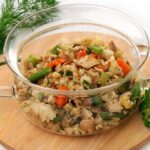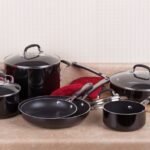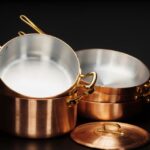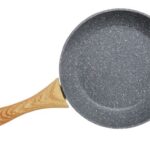As you know, oven-proof cookware makes the combination of cooking and baking processes more comfortable. You can use the same cookware piece to cook the food on the stove and then finish the cooking in the oven. However, before putting your pan in the oven, you must be sure if it is safe for it to go in there. To make sure that your cookware is oven-proof, have a look at the bottom of the pan. There should be a mark that notes if the cookware can be used in the oven.
Another way is to consult the instructions to find out what the maximum oven temperature setting your pan can tolerate without being damaged by heat. Some oven-proof pans are meant to go into an oven up to 350°F, while some others can withstand oven temperatures up to 500°F or even higher.
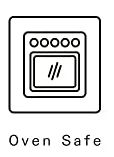
If you have lost the instruction that was included in the packaging, try to find your skillet at the seller’s site and read the description and user manual.
If your piece of cookware is not currently available for purchase, you may want to look carefully at all components that help you understand the ability of your skillet to withstand high temperatures.
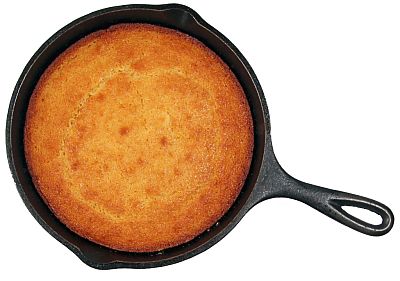
5 Features that Make a Pan Suitable for Use in the Oven
1. Oven-Proof Materials
Stove- and oven-safe skillets are made of cast iron, stainless steel, copper, aluminum, ceramic, or a combination of these materials. To be safely used in an oven, all components of the pan must be oven-proof. An oven-proof skillet shouldn’t have a meltable handle, knob, or any other components that are not oven friendly and could melt or break when the cookware is placed in the oven.
Related brands:
- Misen 5-Ply Stainless Steel Pan – 10 Inch (oven safe up to 800 F and induction stovetop compatible).
- Victoria Cast Iron Skillet Large Frying Pan with Helper Handle (oven safe up to 500F).
2. Heat-Resistant Coating
The coating can improve cookware performance, but it also can be a limiting factor for its heat resistance. You might want to read the instructions for use to make sure that heat will not damage the coating when the skillet is used in the oven.
Teflon nonstick coatings will lose their nonstick quality when exposed to a temperature of about 500°F. Even worse, when exposed to a temperature higher than 500°F the Teflon coatings can release toxic fumes. Cookware with a Teflon coating shouldn’t be used in an oven.
Cookware with ceramic nonstick coatings is oven-safe up to 420-500 degrees F.
Most of the enameled cookware can tolerate oven temperatures up to 450-500 degrees F.
The layer of seasoning in cast iron pans is oven-safe up to 500 degrees.
All-clad hard-anodized pans are oven-safe up to 500 degrees F.
Brands: Stainless Clad Non-Stick Frying Pans by Made In Cookware (oven-safe up to 500F).
3. Oven-Safe Handles
In most cases, the handle makes a skillet vulnerable to high oven temperatures is the handle. A protective coating on the handle is supposed to make it more comfortable to hold the skillet. Unfortunately, this coating is usually made out of wood, plastic, or other heat-sensitive materials that cannot go in an oven without being ruined.
Silicone insulated handles can withstand temperatures from 350 ºF to 482°F. Although oven temperature within that tolerable range may cause rubberized handles to fade in color, this will not affect their functionality.
Some cookware comes with a removable silicone handle sleeve that keeps your hands safe while cooking on the stovetop but you must take the sleeve off before putting the pan in the oven. The removable silicone handle covers can be purchased separately, and one cover can fit multiple pans.
Bakelite handles can tolerate oven temperatures up to 350 degrees F.
Stainless steel and cast iron handles can go in the oven up to 500° F.
Always use oven mitts or potholders when removing hot cookware from the oven.
4. Detachable Handles
Although many accessories can help you handle your skillet from the stove to the oven, a skillet with a removable handle seems to be the most convenient solution for stove-to-oven cooking.
A removable handle increases heat tolerance and makes your pan more versatile. Such a handle also makes the skillet easier to clean and saves the necessary storage space. The handle can be detached and reattached with the push of a button.
5. Oven Proof Lids
Cookware with a glass lid is oven-safe up to 400°F if there are no other questionable parts.
Some lidded pans come with plastic knobs on the lid that are not suitable for use in the oven. Plastic knobs protect from burning your hands when you cook on the stovetop, but they are in danger of melting at high oven temperatures if the lid is not removed before putting the pan in the oven.
The classic phenolic knobs are more thermally resistant than plastic ones, making the lid oven safe up to 375°F. However, the phenolic lid knobs can become brittle if exposed to temperatures above 375 degrees.
To make your lid oven-proof, you can purchase a stainless steel replacement knob. Stainless steel knobs get hot during cooking and baking, so make sure to use an oven mitt or potholder to protect your hands when removing the lid.

